Québec Province
In 1534/5 Jacques Cartier led French expeditions up the St Lawrence as far as the site of Montréal looking for a passage to Asia. In 1608 Samuel de Champlain founded as a trading post on the site of Québec City. Settlement of New France was sparse, but farmsteads were set up along the banks of the St Lawrence by settlers who called themselves “Canadiens”. The British took Québec City in 1759 and the 1763 Treaty of Paris gave the whole area to Britain. The American revolution played a part in preserving the culture of Québec. Fearful that the people of Québec would side with the rebels, Britain recognised French laws, religion and language rather than suppressing them as in Nova Scotia.
Rue St John Baptiste, Baie-St-Paul
Québec City and Montréal are truly bilingual cities. Outside to the two big cities the situation is very different, and in many areas very little English is spoken. We drove along the St Lawrence to Baie-St-Paul and found that school level French plus a phrase book was essential. Even the town web site is in French only. In Baie-St-Paul the Gallic tradition of an excellent but lengthy lunch was very much alive and well, leaving us little time to explore the town.
Montmorency Falls
Some 10 kilometres (6 miles) east of Québec City a huge waterfall cascades almost directly into the St Lawrence. At 83 metres (272 feet) high the Montmorency Falls are higher than Niagara by a good 30 metres (98 feet). The falls were named in 1613 by Samuel de Champlain in honour of Henri II, duc de Montmorency who served as viceroy of New France from 1620 to 1625. The waterfall is surrounded by the provincial Parc de la Chute-Montmorency, and visitors can take a cable car to the top of the falls.
Île d'Orléans
An island in the St Lawrence about 5 kilometres (3 miles) down river from Québec City is where some of the first settlers arrived in New France. It was fertile soil that attracted the early settlers to Île d'Orléans and agriculture remains an important industry on the island known as ”The Garden of Québec”. The island has also become a tourist destination and in 1935 it was connected to the mainland by the Taschereau Bridge.
Canyon Sainte-Anne Waterfall
Although not as spectacular as the Montmorency Falls, it is worth stopping off at Canyon Sainte-Anne Waterfall east of Québec City. This waterfall is not as natural as it looks. In the early 20th century the river was used to float logs down to the St Lawrence but the narrow canyon caused problems with log jams so around 1917 the it was dynamited to ease the passage of the logs. Fortunately nature has done a good job of healing the scars. In the 1970s the owners of the canyon turned it into a tourist attraction with bridges, walkways and viewing platforms.
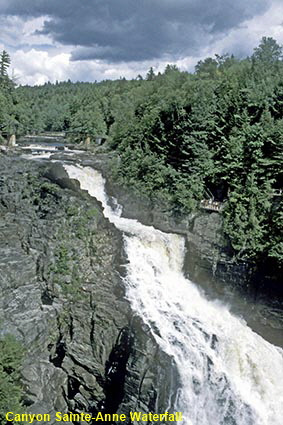
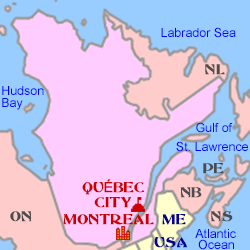
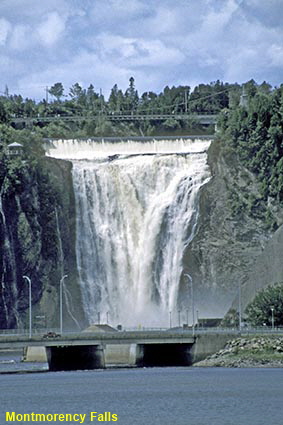
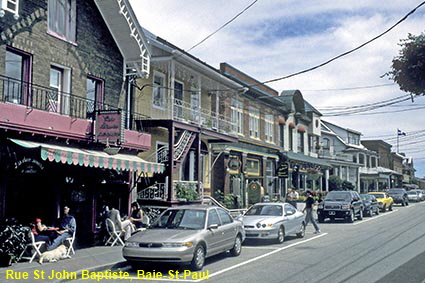
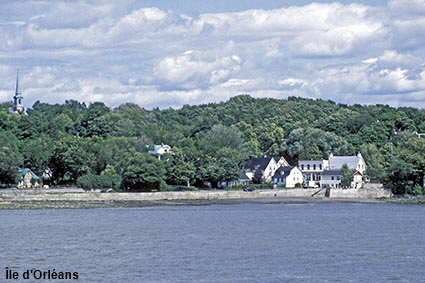
Olympic Stadium, Montréal
Back in 1976, before they became the huge commercial juggernaut that we have seen in recent years, the summer Olympic Games were held in Montréal. Although the games may have been less commercial, they were not devoid of political controversy. 26 African countries boycotted the Games because the New Zealand rugby team had toured South Africa. The Olympic Park remains as a monument to the 1976 Olympics. The Stadium is still used as a location for major sporting events. It is overlooked by the tallest inclined tower in the world and it can be ascended by funicular. Nearby, the Olympic Velodrome (cycling stadium) has been converted into the Montréal Biodôme where visitors can walk through replicas of four different ecosystems found in the Americas.
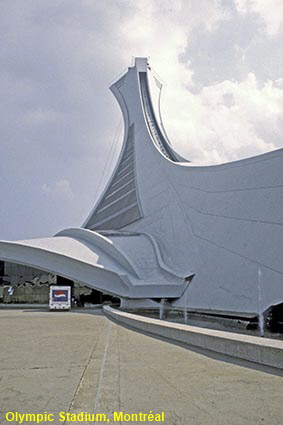
Hôtel du Parlement, Québec City
Although Québec City is has a smaller population than Montréal, it is the seat of the provincial government known as the National Assembly of Québec. The parliament building was built between 1877 and 1186 to designs drawn up by architect Eugène-Étienne Taché. The 125 seat assembly has been the centre of debates about the future of Québec, whether it should seek independence or remain a part of Canada.
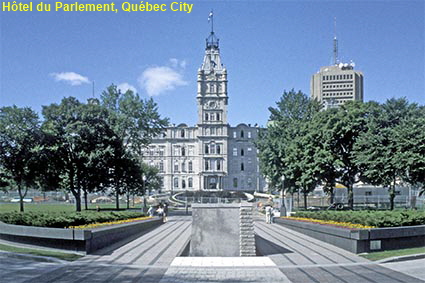
Home > Oh! Canada > Central Canada >
Click on Minimap to navigate


We have more pages on Alberta. Click below or on the Minimap:
DLU060627
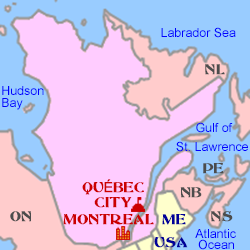
© Mike Elsden 1981 - 2023
The contents of this page may not be reproduced in full or in part without permission